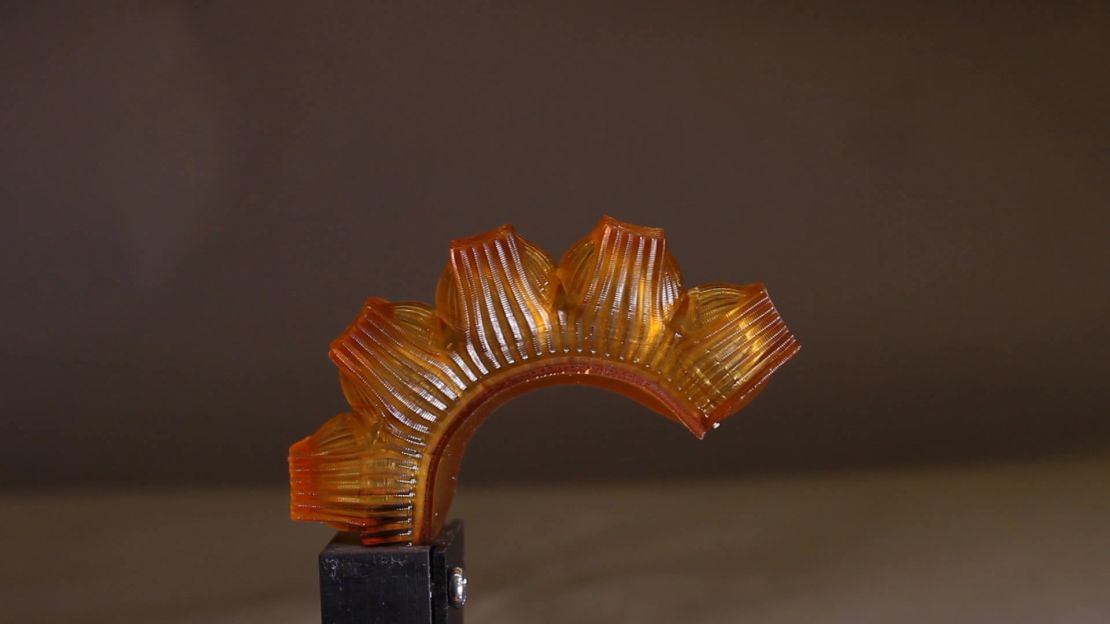Scientists have created a soft robot muscle that sweats to stay cool and mimics the movement of a hand.
The researchers, from Cornell University in New York, developed the robot hand from hydraulically controlled “fingerlike actuators” that have small holes which can secrete water.
The robot, researchers said, can “sweat” to regulate its own temperature.
Robert Shepherd, associate professor of mechanical and aerospace engineering at Cornell, who led the project, said overheating was a particular challenge in robots made from “soft” materials.
That’s because flexible, synthetic materials hold heat from the internal engines that run the robot – unlike metals, which dissipate heat quickly.
In order to keep these materials cool, an internal fan is required – which adds unwanted weight and bulk.

Shepherd worked with Cornell engineering professor Emmanuel Giannelis and T.J. Wallin, a research scientist at Facebook Reality Labs, to find a solution.
They developed a hydrogel material that squeezes water from a series of tiny pores that automatically dilate when the temperature hits 86 F (30C), and close when the temperature falls beneath that.
This method of thermal management means the robot can be operated for long periods of time without overheating, researchers said.
“The ability to perspire is one of the most remarkable features of humans,” Wallin said in a news release from Cornell.
“Sweating takes advantage of evaporated water loss to rapidly dissipate heat and can cool below the ambient environmental temperature.”
Wallin added: “So as is often the case, biology provided an excellent guide for us as engineers.”
Writing about the project in Science Robotics, researchers said that the invention could have uses beyond cooling in the future.
“Fluid excretions could be used to change the friction between surfaces and allow for smooth movement, particularly useful for directing the locomotion of crawling or sliding robots,” the researchers wrote.
The technology could also be used for “digesting” and “absorbing” – such as removing contaminants from a surface.
The researchers did, however, find the invention presented one potential challenge: There is a need for robots to replenish the water supply, which means one day robots may also need to “drink” like mammals, as well as sweat like them, to stay cool.
“Similar to animals that ingest food and water from their environment to sustain thermoregulated activity, our demonstrated system eventually requires a means to replenish lost water during extended operation,” they wrote in Science Robotics.
Scientists last month unveiled an artificial skin that enables robots to feel and respond to physical contact.

